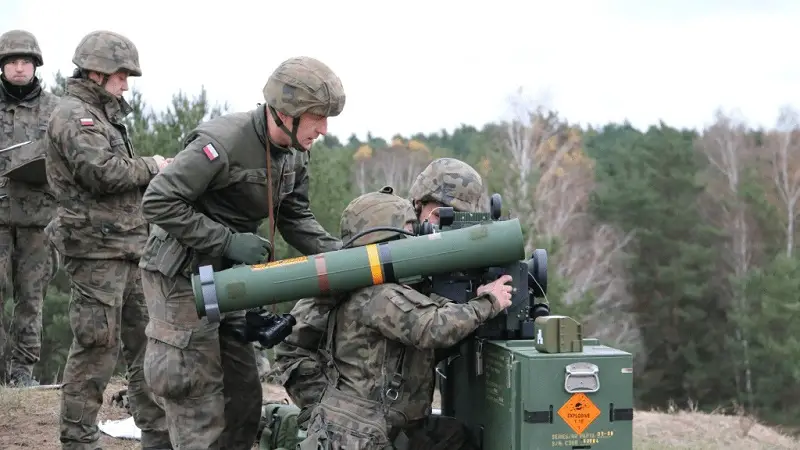The Polish Ministry of Defence, led by Mariusz Blaszczak, has successfully concluded negotiations for the delivery of Spike-LR Anti-Tank Guided Missiles (ATGMs) to bolster the country’s defense capabilities. This agreement, to be implemented over the next few years, will see the Polish military acquiring several hundred Spike-LR ATGMs, the latest and domestically license-manufactured anti-tank weapons by the PGZ Group’s Mesko S.A. company. Defence24 reported that the Armament Agency has disclosed that the deliveries are scheduled between 2023 and 2026, with a contract value of PLN 400 million. Additionally, a separate procurement procedure is underway for portable launch units for the Spike-LR/LR2 missiles.
The Polish Armed Forces received two batches of Spike-LR ATGMs. The first shipment, consisting of 2675 missiles and 264 portable launch units, was delivered between 2004 and 2013, while the second batch, comprising 1000 missiles, was received between 2018 and 2021. These deliveries were part of a previous agreement signed in 2015, valued at PLN 600 million. The Spike-LR missiles are locally manufactured under a license from the Israeli company Rafael by Mesko in Poland. Future integration of the launchers is planned on the ZSSW-30 turrets of the Rosomak vehicle, which will also be installed on the new Borsuk infantry fighting vehicles. Rafael also offers an upgraded variant, the Spike-LR2, which extends the range to 5.5 kilometers and enhances the guidance system and armor-piercing performance.

Spike is an Israeli fire-and-forget anti-tank guided missile and anti-personnel missile with a tandem-charge high-explosive anti-tank (HEAT) warhead. As of 2007, it is in its fourth generation.[4] It was developed and designed by the Israeli company Rafael Advanced Defense Systems. It is available in man-portable, vehicle-launched, and helicopter-launched variants. The missile can engage and destroy targets within the line-of-sight of the launcher (“fire-and-forget”), and some variants can make a top attack through a “fire, observe and update” method (essentially lock-on after launch); the operator tracking the target, or switching to another target, optically through the trailing fiber-optic wire (or RF link in the case of the vehicle-mounted, long-range NLOS variant) while the missile is climbing to altitude after launch.
The highly capable Spike-LR ATGMs can engage targets at a range of up to 4 kilometers. They employ an optical-fiber connection paired with a TV/thermal imaging camera for precise guidance, allowing operators to target enemies hidden behind terrain or to adjust the missile trajectory post-launch. The system also enables a fire-and-forget mode. For even greater effectiveness, the ATGMs can be synchronized with reconnaissance UAVs. These missiles represent the cutting-edge anti-tank assets for the Polish land forces. Remarkably, the new missile is fully backward compatible with existing Spike-LR launchers. Several European NATO member states, including Germany, the Czech Republic, Slovakia, Slovenia, Hungary, Lithuania, Latvia, Estonia, the Netherlands, and Finland, already operate Spike-LR/LR2 missiles, known as MELLS in Germany.















